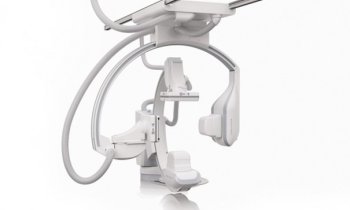Prototype
Therapeutic toy for children with auditory disabilities
Hearing loss is one of the most common birth defects, with more than 12,000 children in the United States affected each year. Three students in Wichita State University's biomedical engineering program recognized this issue and designed their senior project to create a therapeutic toy to provide early intervention therapy for children with auditory disabilities.

Matthew Wong, Esra Barut and Sanjuana Martinez worked together on this project during the past year. Their end product was a toy elephant containing a microphone and LED lights, which light up with sound. "There's nothing like it out in the market," Martinez says. "We thought it would be really helpful if we actually got it to work."
The idea for the therapeutic speech development toy came from Molly Lyon, an audiologist at Heartspring. Lyon had developed a basic toy for encouraging children to develop their vocal chords, but was looking for improved design and simplicity. "What she had was a glowworm doll, and she stuck a baby monitor in it," Wong says.
The baby monitor registered the noises and words that children made, and lit up, creating an interactive toy. The purpose was to show the children that they were making noise, which keeps them from becoming discouraged and giving up on their speech. The development of vocal chords at a young age is crucial as it determines their functionality later in life.
While the group initially set out to merely make the device wireless, they ended up improving several other areas of it as well. The toy has a microphone located in the elephant's trunk to pick up the noises a child makes. The noises cause LED lights in the elephant's ears to light up, with different colors for different frequencies. The frequencies are separated by above 1,000 hertz, which pick up consonant sounds, and below 1,000 hertz, which pick up vowel sounds.
Encouraging children
Wong says the differentiation allows therapists to see what areas of the vocal chords are not being developed.
While the only way to detect this on the current prototype is to manually count how many times each ear lights up, the team hopes to further develop the programing to collect the data and store it, making it accessible for the therapist. "Even if (the child) were to take it home, there will be data of how many times each frequency is used," Barut says.
Wong says this project played to all of their strengths, while also pushing them to learn new things. "None of us are electrical or computer science (majors)," Wong says. "We had to go out and teach ourselves and get help from other people."
All three agree that pushing their boundaries was a good experience, not only in helping the community outside of Wichita State, but also expanding their knowledge base. Barut says this sparked her interest in coding. "It's just a bunch of letters put together, but they give something function," says Barut. "It's really powerful." Barut found a personal connection with the project through a friend who is trying to learn a new language. "There are some letters that just won't come out," Barut says. "She never developed those areas of her vocal chords when she was a child."
This toy gives children encouragement because there are direct results when they use their voices, and yet it doesn't make them feel like they're in therapy. "It's not a test," Wong says. "It's just something they can relax with."
The group is hoping to have a second prototype of the toy out in November, with their goal being a marketable product for parents and therapists alike.
Source: Wichita State University
16.10.2015










